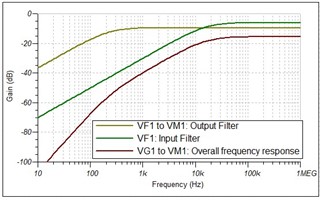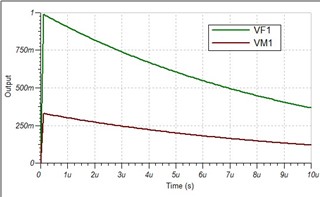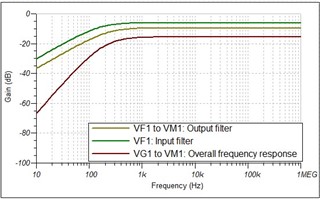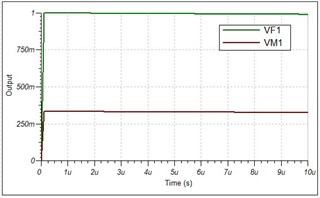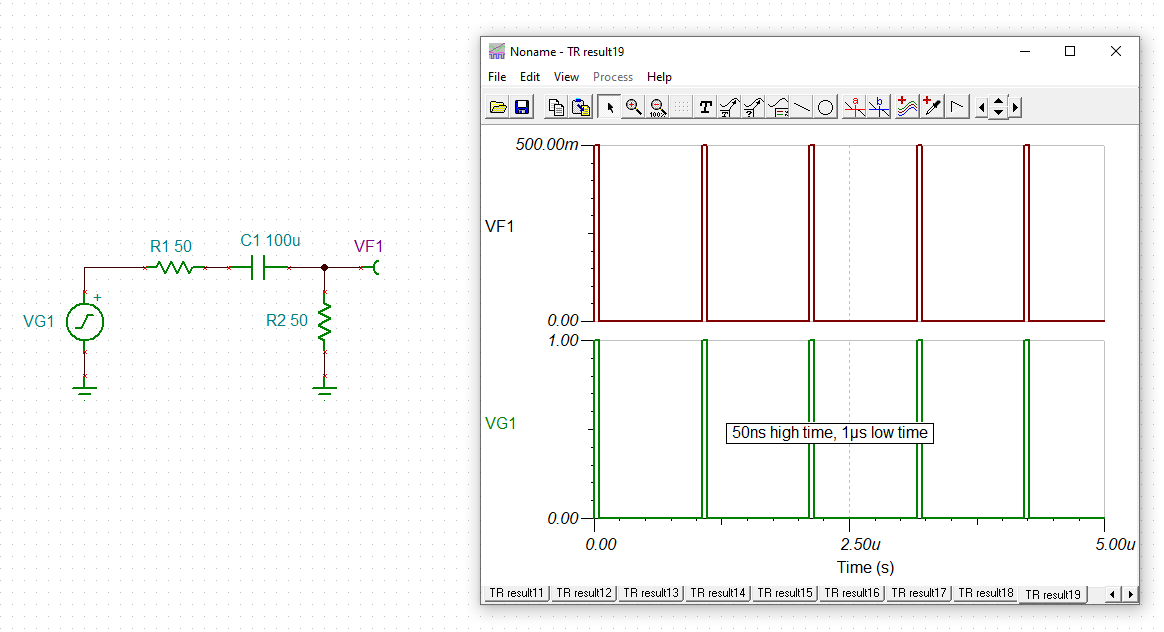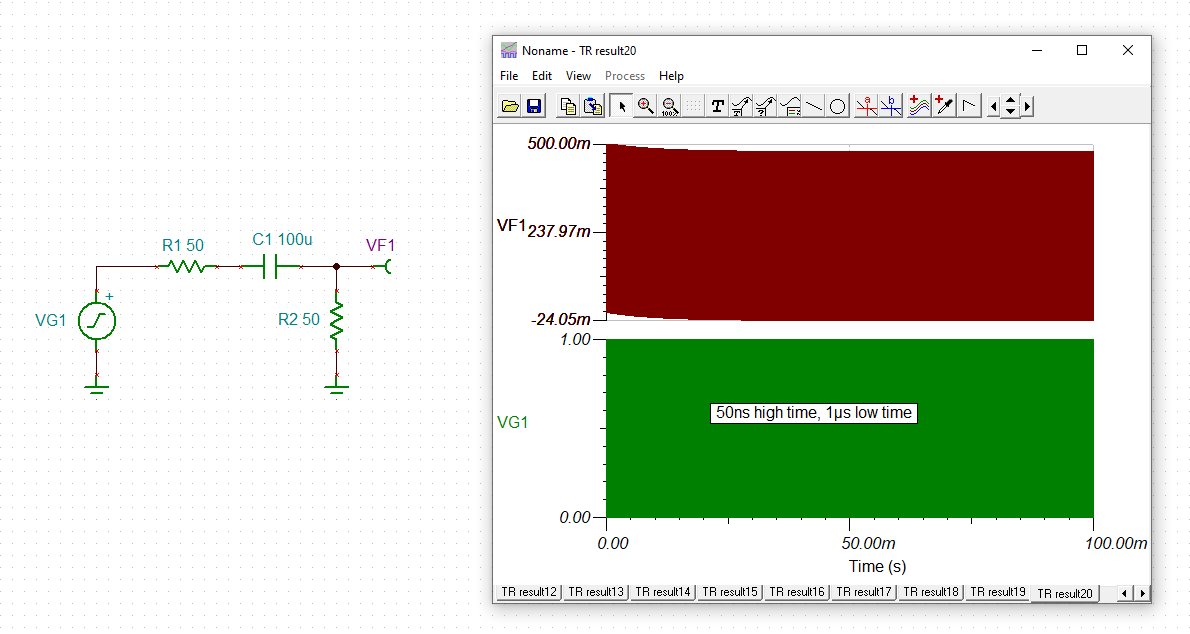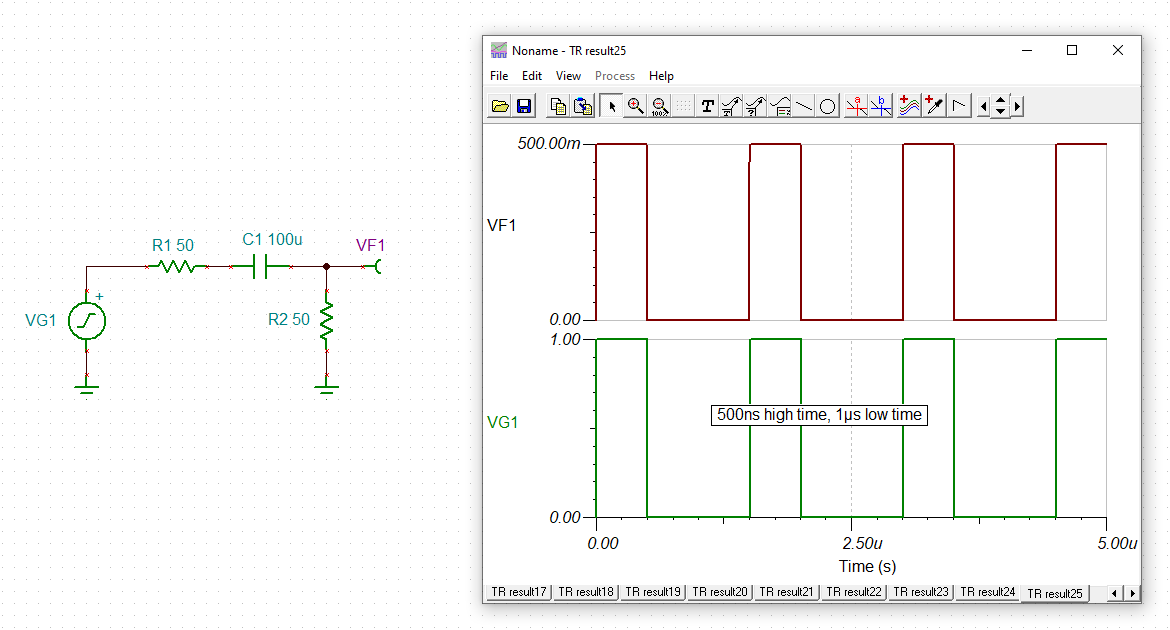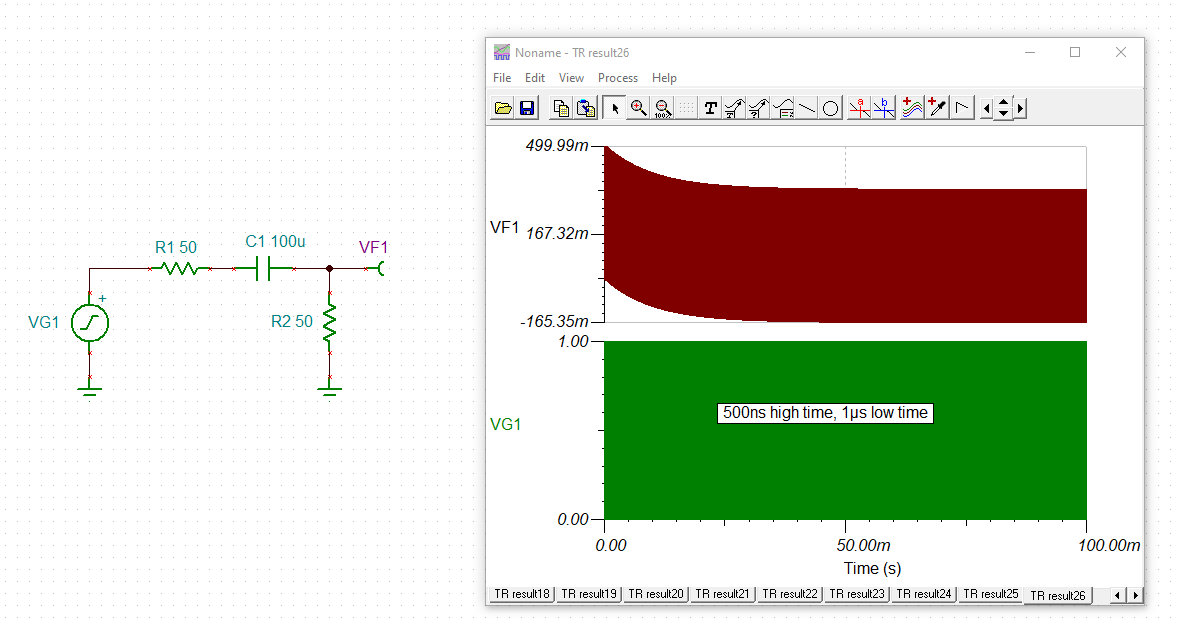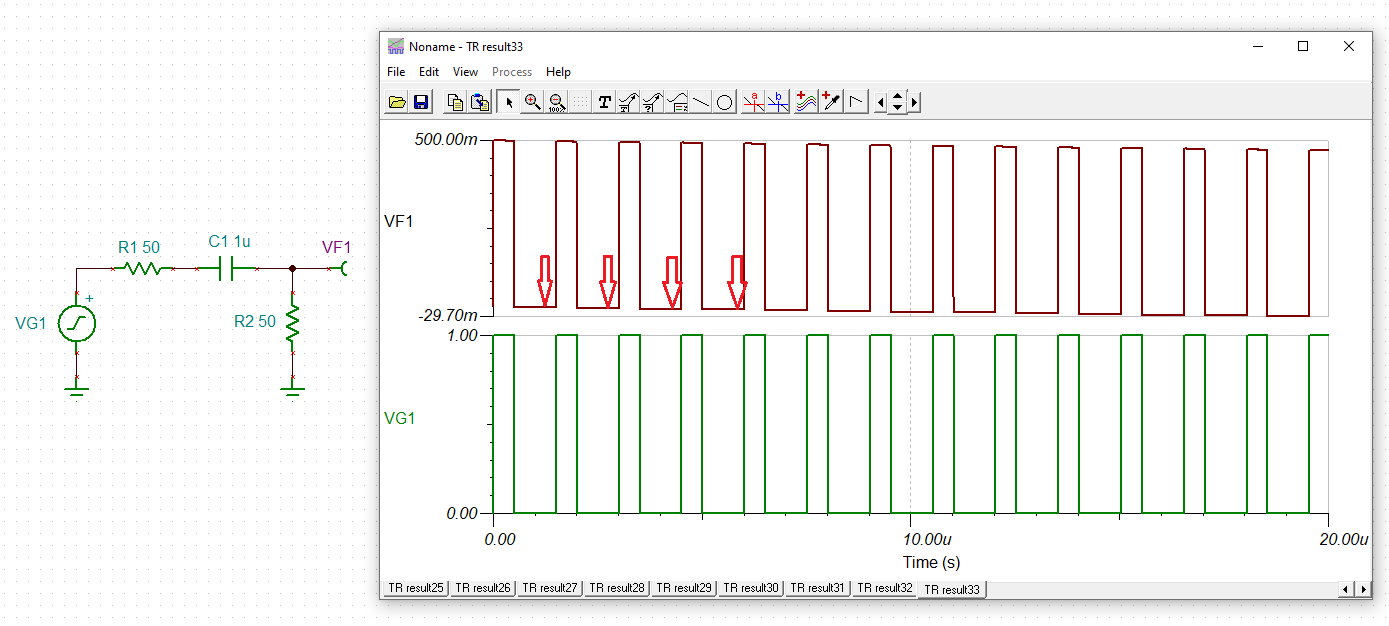Other Parts Discussed in Thread: ADS4128, OPA657, TINA-TI
Hello,
I use the LMH6881 as the second amplifier and the ADS4128 to sample the data. The schematic is below:
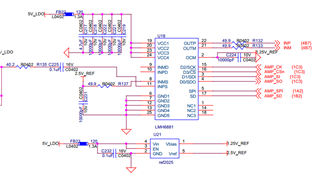
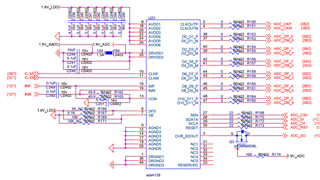
The pulse (pulse width=20ns, pulse period=50ns, tr/tf=2.6ns, Vpp=0.15V) is feed to the LMH6881. We found that the pulse signal drifted downward. (Get from the ADS4128 or test by Oscilloscope is the same) The pulse signal don't drift at the input pin 11 of the LMH6881.
Then we get the simulation project of LMH6881 from TI website. We use the PSpice for TI 2022 to simulate the LMH6881. From the result of the simulation, we find the output of LMH6881 drifted downward too. The schematic and result of the simulation are below:
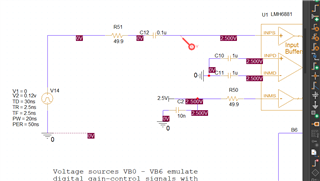
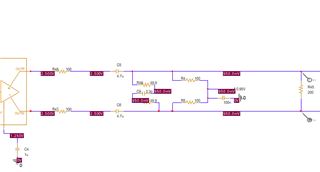

Could you help us analyze the reasons and give us some suggestions for this problem, please? Thanks very much!
Best regards,
MW



